5 Most Common Florida Lawn Diseases

Many are envious of Florida’s climate, but its abundant rainfall makes Florida lawns prone to lawn disease and grass fungus. Turf diseases can take the form of patches of brown or dying grass. Before you start to overwater your lawn or apply fungicides, read our tips on how to identify the 5 most common lawn fungi in Florida, which are:
Dollar Spot Lawn Disease
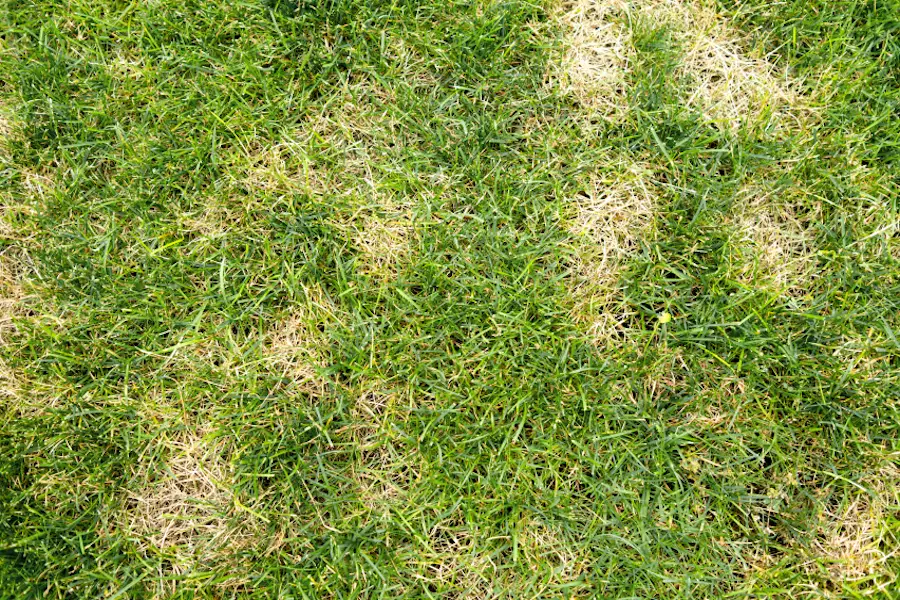
Dollar Spot is a turf disease that occurs between late spring and late fall. Unlike Brown Patch Fungus, Dollar Spot plagues yards with solid circles of infected grass that resemble silver dollar coins, 2-6 inches wide.
Early on, grass blades with Dollar Spot display pale, tan specks—also called lesions—surrounded by a thin, dark outline. The infection eventually kills the whole blade and several of its neighboring grass leaves, resulting in a scatter of straw-like brown spots on infected lawns.
Grass types commonly affected by Dollar Spot disease:
- Fescue grass
- Ryegrass
- Bentgrass
- Bluegrass
- Bermuda grass
- Zoysia grass
Brown Patch Fungus
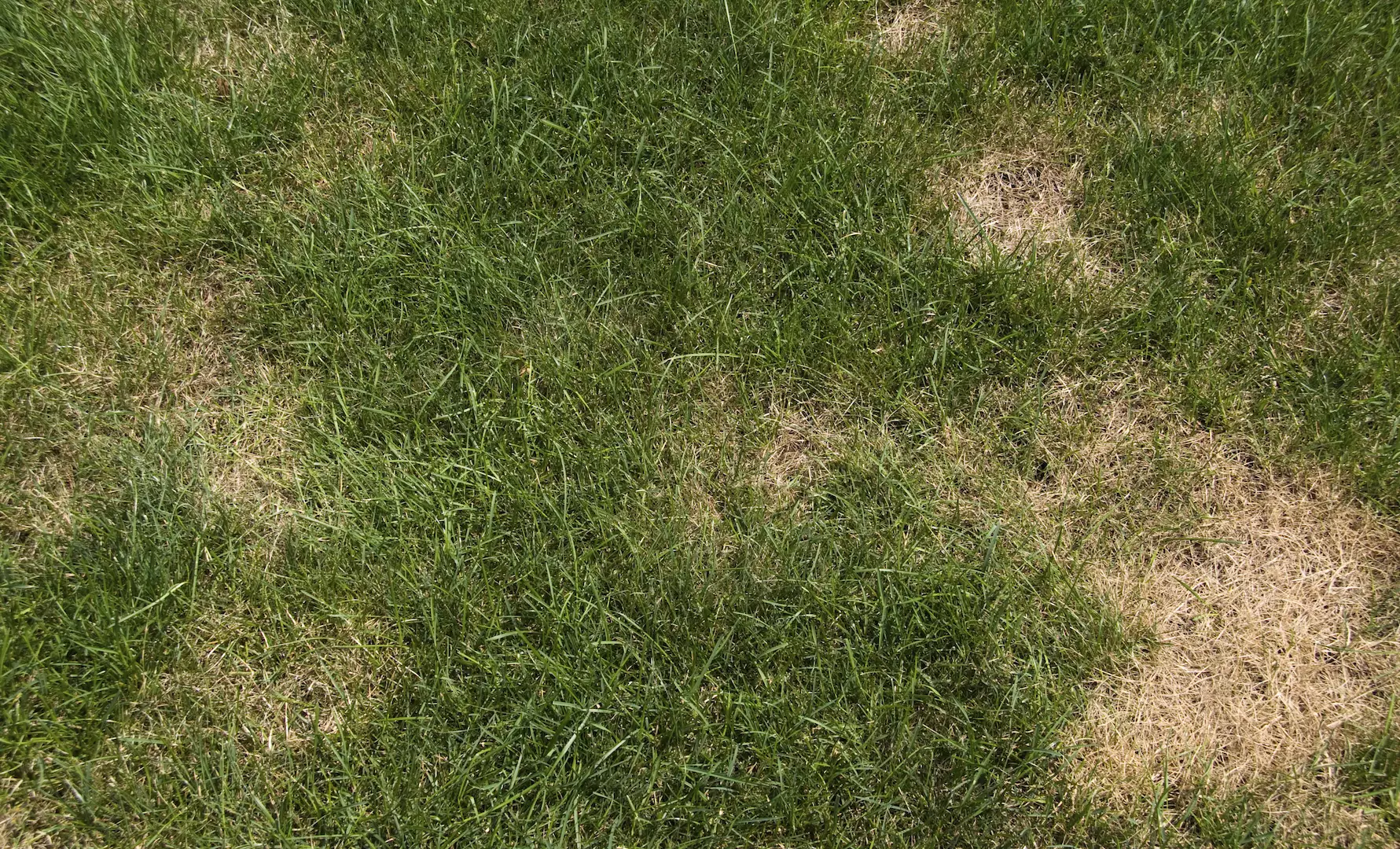
Brown Patch is a grass fungus often misidentified because turf diseases have similar symptoms. Because Brown Patch requires a specific treatment, it’s important to correctly identify your grass fungus before proceeding with solutions. Brown Patch is often confused with Fairy Rings because both display a brown ring or crescent of dead grass—ranging from 6 inches to 9 feet in diameter—circling healthy turf.
The identifying factor of Brown Patch is noting when symptoms appear. Brown spots on your lawn that show when the average temperature is between 70 and 85 degrees (November – May in Florida) are a strong indicator that Brown Patch has infected your grass. If there are lawn mushrooms sprouting on the affected turf, it’s more likely you have Fairy Rings. Having a lawn care professional perform an expert assessment is the fail-proof way to identify which grass fungus is disturbing your lawn.
Grass types commonly affected by Brown Patch Fungus:
- Perennial ryegrass
- Tall fescue
- Bentgrass
- St. Augustine
- Zoysia grass
Lawn Rust Disease
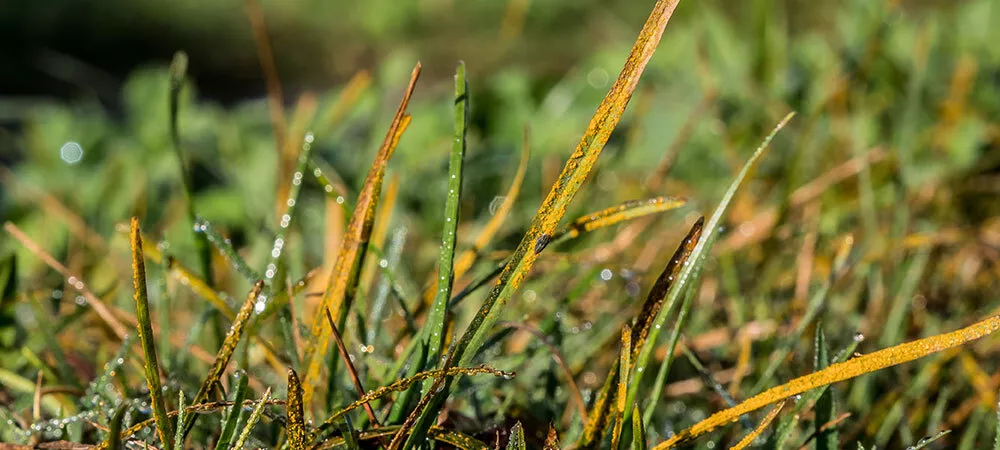
Lawn Rust Disease is a lawn fungus that occurs from mid-summer to late fall. It appears as a yellowy-orange, rusty powder on your grass blades—differing from Red Thread grass fungus, which appears as red or pink strands. This turf fungus slows grass growth and makes it vulnerable to damaging pests and other turf diseases.
Grass types commonly affected by Lawn Rust Disease:
- Kentucky bluegrass
- Perennial ryegrass
- Tall fescue
Fairy Rings
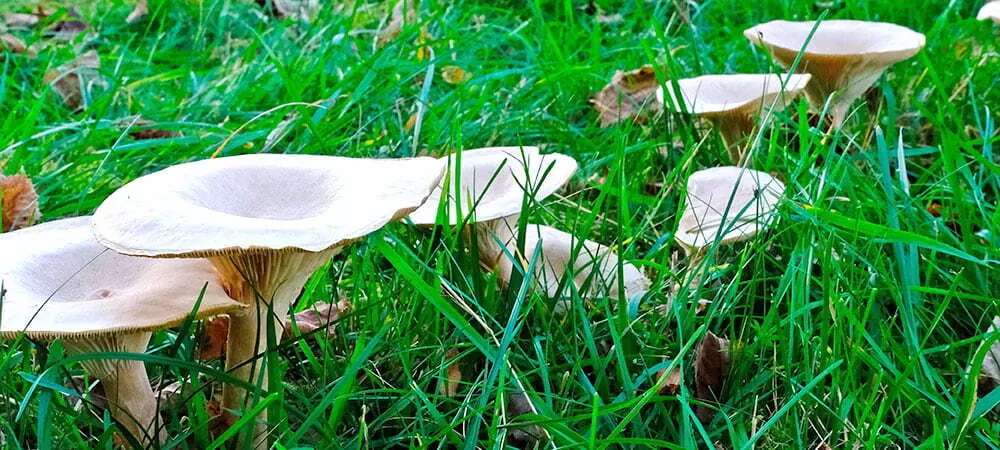
This lawn disease reveals itself in summer when Florida receives the most rain. Similar to Brown Patch Fungus, Fairy Rings appear as large rings or arcs (up to 6 feet in diameter) of discolored grass with healthy turf in the middle. Lawn mushrooms commonly sprout on Fairy Rings, resulting in a halo of toadstools in your yard.
Despite its enchanting name, Fairy Rings produce a layer of grass fungus that blocks roots from getting water. Lawn aeration every 1-2 years breaks up this layer and ensures your grass is hydrated.
Grass types commonly affected by Fairy Rings:
- Bermuda grass
- St. Augustine grass
- Carpetgrass
- Zoysia grass
- Bahiagrass
- Centipede grass
Red Thread Fungus
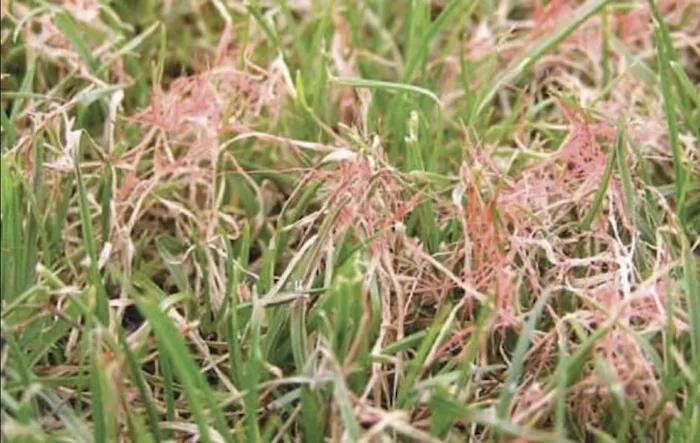
Red Thread Fungus differs from Dollar Spots and Lawn Rust Disease by its color and strand-like appearance. Red Thread is a turf fungus that shows up as irregular red or pink patches on your lawn, measuring 1 inch to 2 feet wide. Evidence of this grass fungus appears late spring – early summer. Although this lawn fungus doesn’t kill your grass, it does attract other lawn diseases and pests that do.
Grass types commonly affected by Red Thread Fungus:
- Perennial ryegrass
- Fine fescue
- Kentucky bluegrass
Call Professional Lawn Technicians
Distinguishing one Florida turf fungus from another can be challenging. Call your local lawn care professionals at Deans Services for a confident identification. Our experienced team can inspect your yard, properly identify what ails your lawn, and create a customized treatment plan. Contact us today to schedule a consultation.
The turf experts at Deans Services are thrilled to answer all your questions on lawn diseases, but here are a few of the most common.
How Do You Know If Your Lawn Has A Disease?
To identify a lawn disease, look for these symptoms:
- Irregular thin, discolored, or dead patches on your lawn.
- Noticeable increase in lawn pests.
- Stunted or stopped plant growth.
If you’re unsure, call Deans Services and we’ll send a lawn technician to give an expert diagnosis.
What Causes Lawn Disease?
Turf diseases occur in humid climates that don’t give grass a chance to dry between hot summer days and relatively cooler nights. The excessive moisture causes root rot, depriving the grass root of air and eventually killing it. This results in brown spots on your lawn that could signify a number of turf diseases.
What Time Of Year Do Lawn Diseases Spread?
Symptoms are observed from early spring to late summer. Dollar Spot and Lawn Rust Disease appear as small specks on individual grass blades in the spring. By summer, the brown spots on your lawn spread into patches, ranging in a variety of sizes.
Will Lawn Diseases Go Away On Their Own?
Waiting for a turf disease to go away on its own gives it time to spread. Call Deans Services and tell us your lawn’s symptoms. We’re more than familiar with these lawn diseases and how to treat them. We even make custom packages for our customers so every lawn gets exactly what it needs.
